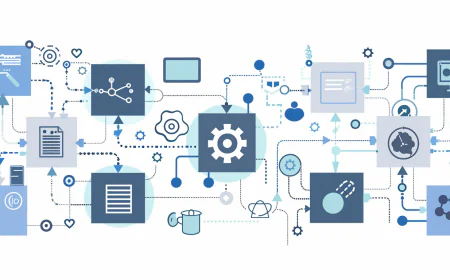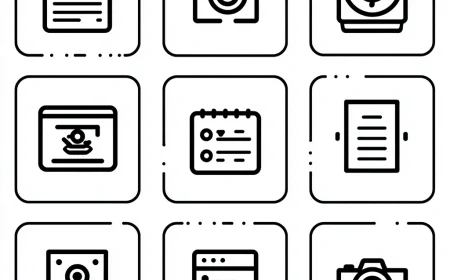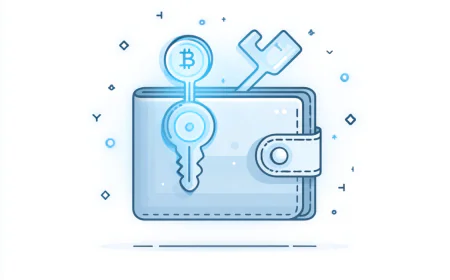Beginner’s Guide to Personal Finance: How to Save, Invest, and Avoid Debt in 2025
A practical 2025 beginner’s guide to personal finance covering budgeting, saving, investing, and debt management. Learn how to build an emergency fund, invest wisely, and create a roadmap to financial independence.

Beginner’s Guide to Personal Finance: How to Save, Invest, and Avoid Debt in 2025
Welcome to your ultimate roadmap to financial independence! In an era of economic uncertainty, rising costs, and evolving markets, mastering personal finance is more crucial than ever. Whether you're a recent graduate navigating student loans, a young professional building wealth, or someone seeking to optimize your finances mid-career, this comprehensive guide equips you with timeless principles and up-to-date strategies tailored for 2025.
This beginner-friendly resource demystifies budgeting, saving, investing, and debt management, blending foundational advice with advanced tactics. We'll emphasize actionable steps to help you make informed decisions. Remember, personal finance isn't about quick riches—it's about disciplined habits that leverage compound growth for long-term prosperity.
By the end, you'll have a personalized action plan to seize control of your finances and thrive in today's dynamic economy.
1. Build a Strong Financial Foundation
The cornerstone of financial success is awareness. Before saving or investing, track your cash flow to eliminate leaks and maximize efficiency.
- Beginner Step: Monitor your income and expenses for one month using apps like YNAB, Monarch Money, or Simplifi. These tools categorize spending automatically for effortless insights.
- Quick Framework: Categorize expenses into essentials (housing, groceries, utilities) versus discretionary (dining out, subscriptions).
- Rule of Thumb: Adopt the 50/30/20 budgeting rule: 50% on needs, 30% on wants, and 20% on savings or debt repayment.
- Pro Move: Transition to zero-based budgeting, assigning every dollar a specific job—ensuring nothing slips through the cracks.
Why It Matters: Without visibility, small expenses erode your wealth. Budgeting empowers you to redirect funds toward goals, potentially saving thousands annually.
2. How to Save Money Effectively
Savings provide a safety net against life's surprises and seed capital for future growth. In 2025, with inflation stabilizing but costs high, prioritize high-yield options.
Beginner Moves
- Emergency Fund Priority: Build a $1,000 buffer immediately, then aim for 3–6 months of living expenses. Store it in a high-yield savings account (HYSA).
- Automate for Success: Set up automatic transfers of 10–15% of your paycheck to savings. Round-up tools can help you save or invest spare change.
- Trim Unnecessary Expenses: Audit subscriptions, negotiate bills, and adopt habits like meal prepping to reclaim hundreds monthly.
Advanced Moves
- Tiered Savings Strategy:
- Short-term (1–2 years): HYSA or certificates of deposit (CDs).
- Mid-term (≈5 years): CDs or short-term bonds.
- Long-term (retirement): Tax-advantaged accounts like 401(k)s or IRAs.
- Leverage Tax Benefits: Consider HSAs, 529 college plans, or Roth IRAs for tax-advantaged growth.
- Income Amplification: Dedicate 50% of side gig earnings to savings to accelerate progress.
| Savings Goal | Beginner Target | Advanced Target | Recommended Tools/Accounts |
|---|---|---|---|
| Emergency Fund | $1,000 | 3–6 months’ expenses | High-Yield Savings Account (HYSA) |
| Short-Term Goals | $500/month | $2,000/month | Automatic transfers via your budgeting app |
| Retirement | 10% of income | 15–20% (plus employer match) | 401(k) / Roth IRA |
3. Investing for the Future
Savings preserve capital, but investing multiplies it through compounding. With broad U.S. equity indexes historically returning about 7% annually after inflation over long periods, starting early is key—especially in evolving markets.
Beginner Moves
- Low-Risk Entry: Invest in broad-market index funds or ETFs (e.g., total market or S&P 500 trackers).
- Retirement Vehicles: Contribute to a 401(k) to capture employer matches; open a Roth IRA if eligible.
- Risk Awareness: Markets fluctuate, but diversified, long-term holds historically deliver 7–10% average annual returns before/after inflation depending on the measure and period.
Advanced Moves
- Portfolio Diversification: Example allocation: 60% stocks, 30% bonds, 10% alternatives (REITs/commodities). Adjust to risk tolerance and horizon.
- Smart Timing: Use dollar-cost averaging—invest a fixed amount at regular intervals to mitigate volatility.
- Emerging Options: Limit speculative assets (e.g., crypto, P2P lending) to <5% and research thoroughly.
Core Insight: Time in the market usually beats timing the market. For example, $10,000 growing at 7% annually becomes about $76,000 in 30 years—pure compounding.
4. Avoiding & Managing Debt
Debt can be a tool (e.g., mortgages) or a trap (e.g., high-interest cards). With elevated rates, proactive management is essential.
Beginner Moves
- Steer Clear of Costly Debt: Use debit or cash until your credit habits are solid.
- Credit Card Mastery: Pay balances in full monthly to build credit without interest.
- Motivational Payoff: Try the debt snowball—pay smallest balances first for quick wins while making minimums on the rest.
Advanced Moves
- Cost-Efficient Strategy: Use the avalanche—target the highest interest rate first to minimize total interest.
- Optimize Terms: Refinance or consolidate when it meaningfully lowers your rate and fees.
- Debt Classification: Keep “good” debt (productive, low-rate, asset-backed) and eliminate “bad” debt (high-rate, consumptive).
| Debt Type | Typical Interest | Avoidance Tip | Best Payoff Method |
|---|---|---|---|
| Credit Card | ~20–24% APR | Pay statement balance monthly | Avalanche (highest APR first) |
| Student Loan | ~6–8% | Use income-driven plans / refi prudently | Refinance if it reduces cost |
| Mortgage | ~6–7% | Save 20% down if possible | Optional extra principal payments |
5. Tips to Learn Personal Finance Faster
Treat finance as a lifelong skill. Dedicate time to education for confident decision-making.
- Daily Habit: Spend 15 minutes on trusted personal-finance articles or podcasts (e.g., Planet Money, The Ramsey Show, So Money).
- Essential Reads:
- Beginner: “The Total Money Makeover” (Dave Ramsey), “I Will Teach You to Be Rich” (Ramit Sethi).
- Advanced: “The Intelligent Investor” (Benjamin Graham), “Die with Zero” (Bill Perkins).
- Educational Resources: Free courses on Khan Academy or Coursera; communities like r/personalfinance.
- Gamification: Reward milestones (e.g., treat yourself after saving $5,000).
- Support Network: Partner with an accountability buddy or consult a certified financial planner.
6. How to Start This Strategy Today
Overwhelmed? This phased roadmap breaks it down into manageable steps for immediate implementation.
- Track Your Cash Flow (Weeks 1–2): Log all transactions with an app. Separate needs from wants to spot savings.
- Establish Your Emergency Fund (Month 1): Target $1,000 in a HYSA. Boost income by selling items or freelancing.
- Automate Your Finances (Month 2): Schedule 10–15% transfers to savings and investments. Automate bills to avoid fees.
- Conquer High-Interest Debt (Months 2–6): Use snowball or avalanche. Commit to no new high-interest debt.
- Initiate Investing (Month 3+): Open a Roth IRA or maximize your 401(k). Start with diversified index funds via dollar-cost averaging.
- Continuous Learning (Ongoing): Read a finance book quarterly, join online forums, and track progress.
Pro Tip: Focus on one step weekly to build momentum. In 6–12 months, you'll see transformative results.
Final Thoughts
Personal finance is uniquely yours—adapt these strategies to your life stage and goals. Begin with basics: budget wisely, save diligently, and manage debt strategically. As confidence grows, incorporate investing and advanced tools.
Consistency is the ultimate wealth-builder. Small actions, like automating $50 weekly into an ETF, can yield meaningful results over time.
🚀 Cheers to your financial empowerment in 2025 and beyond!
What's Your Reaction?
 Like
0
Like
0
 Dislike
0
Dislike
0
 Love
0
Love
0
 Funny
0
Funny
0
 Angry
0
Angry
0
 Sad
0
Sad
0
 Wow
0
Wow
0











































